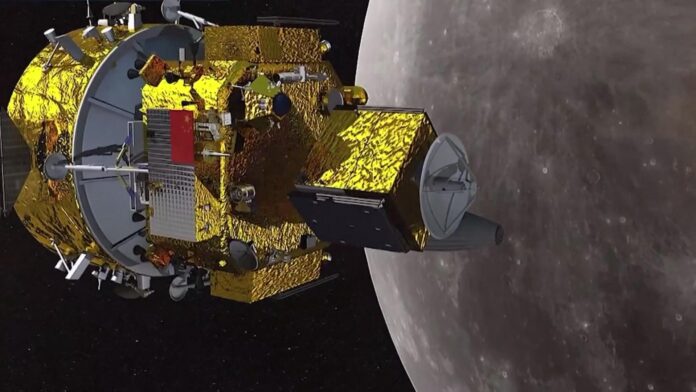China recently completed the sixth test run of the main rocket engine for its future crewed lunar missions, setting a new record in the sector, according to the China Aerospace Science and Technology Corporation.
The 130-tonne class liquid oxygen kerosene rocket engine had a cumulative test run time of 3,300 seconds after this recent trial, a new record for the longest trial of a single 100-tonne class engine in China, according to the corporation.
As the main engine for the country’s future crewed lunar missions, the device needs higher comprehensive performance and reliability.
The trial broke the previous record for the longest test run, which was achieved less than six months earlier, according to the corporation, adding that the operating time of the engine in the trial exceeded its required mission by more than 10 times, which it said verifies its reliability.
Crewed lunar landing before 2030
China plans to achieve a crewed lunar landing before 2030, Lin Xiqiang, deputy director of the China Manned Space Agency, announced on May 29 at a press conference.
Lin said China recently initiated the lunar landing phase of its manned lunar exploration program, aiming to achieve China’s first manned landing on the moon by 2030 and carrying out lunar scientific exploration and related technological experiments.
According to Lin, China is also aiming to master key technologies, such as an Earth-moon manned round-trip, a short-term stay on the lunar surface, a human-robot exploration, performing multiple landing, roving, sampling, researching tasks, returning, and forming an independent capability of manned lunar exploration.
The international lunar research station
China formally established its lunar exploration “Project Chang’e” in 2004. In December 2020, the Chang’e-5 lunar probe brought back 1,731 grams of samples from the moon, marking the completion of the three-step lunar exploration program of orbiting, landing and returning.
In 2022, the China National Space Administration announced a plan to begin the fourth phase of the lunar probe program, including launching three missions dubbed the Chang’e-6, Chang’e-7 and Chang’e-8, and the construction of an international lunar research station on the moon, said Wu Weiren, the chief designer of the lunar exploration program.
The Chang’e-6 mission is expected to retrieve lunar soil samples from the far side of the moon around 2024, which will be the first time humankind will collect soil samples from the far side of the Earth’s natural satellite.
The Chang’e-7 mission is prepared to land on the south pole of the moon, looking for traces of water, Wu said, adding that the Chang’e-8 mission, which is planned to be launched around 2028, is designed to work with the Chang’e-7 to lay the foundation for the building of a lunar research station on the south pole of the moon, and facilitate a series of experiments on lunar resources exploration and utilization.
The chief designer also said China welcomes partners and scientists from across the globe to join the construction of the international lunar research station on the moon, as the country plans to launch multiple spaceflight missions to finish the station’s basic structure by 2030.























